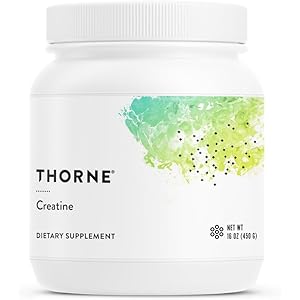Nutricost Creatine Monohydrate Micronized Powder 500G, 5000mg Per Serv (5g) - 100 Servings, 17.9 Oz
$14.97 (as of May 19, 2025 11:59 GMT +00:00 - More infoProduct prices and availability are accurate as of the date/time indicated and are subject to change. Any price and availability information displayed on [relevant Amazon Site(s), as applicable] at the time of purchase will apply to the purchase of this product.)Understanding Micronutrient Toxicity
Micronutrient toxicity refers to the harmful effects that can occur when there is an excessive intake of essential vitamins and minerals. While micronutrients are vital for various bodily functions, their overconsumption can lead to adverse health effects. It is crucial to understand the balance required for optimal health and the potential risks associated with excessive intake.
Common Micronutrients and Their Toxicity Levels
Different micronutrients have varying toxicity levels. For instance, fat-soluble vitamins like A, D, E, and K can accumulate in the body and lead to toxicity if consumed in excess. Water-soluble vitamins, such as B and C, are generally excreted through urine, but high doses can still cause side effects. Understanding the specific toxicity levels of each micronutrient is essential for safe supplementation.
Symptoms of Micronutrient Toxicity
The symptoms of micronutrient toxicity can vary widely depending on the nutrient involved. For example, vitamin A toxicity may cause headaches, dizziness, and nausea, while excessive iron intake can lead to gastrointestinal distress and organ damage. Recognizing these symptoms early can help mitigate the risks associated with high micronutrient levels.
Factors Influencing Micronutrient Toxicity
Several factors can influence the risk of micronutrient toxicity, including age, sex, health status, and dietary habits. For instance, pregnant women may be more susceptible to certain vitamin overdoses, while individuals with pre-existing health conditions may experience heightened sensitivity to specific minerals. Tailoring micronutrient intake based on individual needs is crucial for preventing toxicity.
Sources of Micronutrient Overconsumption
Micronutrient overconsumption can occur through various sources, including dietary supplements, fortified foods, and excessive intake of certain foods. For example, consuming large amounts of liver can lead to vitamin A toxicity, while excessive use of iron supplements can result in iron overload. Awareness of these sources is vital for maintaining a balanced diet.
Preventing Micronutrient Toxicity
Preventing micronutrient toxicity involves understanding recommended dietary allowances (RDAs) and adhering to them. It is essential to consult healthcare professionals before starting any supplementation, especially for individuals with specific health concerns. A balanced diet rich in whole foods can help achieve optimal micronutrient levels without the risk of toxicity.
The Role of Healthcare Professionals
Healthcare professionals play a crucial role in educating individuals about the risks of micronutrient toxicity. They can provide personalized advice based on individual health profiles and dietary needs. Regular check-ups and blood tests can help monitor micronutrient levels and prevent potential toxicities.
Research and Studies on Micronutrient Toxicity
Ongoing research continues to shed light on the complexities of micronutrient toxicity. Studies have explored the effects of high-dose supplementation and its implications for public health. Understanding these findings can help shape dietary guidelines and recommendations for safe micronutrient intake.
Conclusion on Micronutrient Toxicity
While micronutrients are essential for health, it is vital to approach their intake with caution. Awareness of the potential for toxicity, understanding individual needs, and consulting with healthcare professionals can help ensure that micronutrient consumption remains within safe limits, promoting overall well-being without the risk of adverse effects.


